
“India’s Border Patrol Shows Readiness to Strengthen National Security!”2025
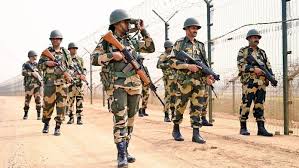
India’s border patrol forces have proven to be a strong line of defence in a time when the dynamics of international security are continuously changing, demonstrating their unwavering dedication to preserving the country’s sovereignty. India’s border security system is a monument to tenacity, strategic vision, and technological innovation, spanning from the untamed landscapes of the Himalayas to the coastal regions of the Arabian Sea and the Bay of Bengal. This blog explores India’s border patrol’s many facets, their ability to fend off threats, and their crucial role in bolstering national security.
Tharoor Decodes
The Strategic Importance of India’s Borders
Across more than 15,000 kilometres of varied terrain, India shares borders with seven nations: China, Nepal, Bhutan, Bangladesh, Myanmar, Pakistan, and Afghanistan (through the Line of Control in Jammu and Kashmir). These borders cover some of the most difficult terrain, such as riverine deltas, arid deserts, dense forests, and snow-capped mountains. From illegal immigration and territorial disputes to cross-border terrorism and smuggling, every region poses different security challenges.
t is impossible to exaggerate the strategic importance of India’s borders. They serve as vital borders that safeguard the country’s political stability, cultural legacy, and economic interests in addition to being simple geographic boundaries. To keep these borders impregnable, the Indian Army works in concert with the border patrol forces, which include the Assam Rifles, Indo-Tibetan Border Police (ITBP), Sashastra Seema Bal (SSB), and Border Security Force (BSF).
The Role of India’s Border Patrol Forces
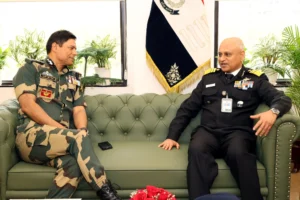
The BSF, also known as India’s “First Line of Defence,” is responsible for protecting the country’s borders with Bangladesh and Pakistan. The BSF is one of the biggest border guarding forces in the world, with more than 265,000 personnel. Keeping the International Border peaceful during times of peace, preventing cross-border infiltration, and reducing smuggling are all part of its mandate.
The BSF’s proactive measures, including the use of cutting-edge surveillance technologies like drones, night-vision cameras, and motion sensors, have been highlighted in recent reports. The force’s capacity to identify and eliminate threats in real time has been greatly improved by these tools. For example, the BSF has demonstrated its operational effectiveness and vigilance by successfully stopping multiple attempts to smuggle weapons and drugs along the Punjab border with Pakistan.
Indo-Tibetan Border Police (ITBP): Guardians of the Himalayas
The ITBP is specifically trained to operate in harsh weather conditions, frequently at elevations of more than 15,000 feet, in the high-altitude regions of the Indo-China border. Given India’s tense relations with China, especially along the Line of Actual Control (LAC), the ITBP plays a crucial role. In delicate regions like Ladakh, Arunachal Pradesh, and Sikkim, the force has played a crucial role in preserving territorial integrity.
The building of forward posts and all-weather roads, among other recent infrastructure development projects, has improved the ITBP’s operational capabilities. In order to combat possible threats, the force has also embraced modernisation, integrating high-tech weapons and satellite-based communication systems. The ITBP’s preparedness was demonstrated in the 2020 conflict in the Galwan Valley, where its soldiers bravely stood up for India’s independence.
Sashastra Seema Bal (SSB) and Assam Rifles: Securing Open Borders
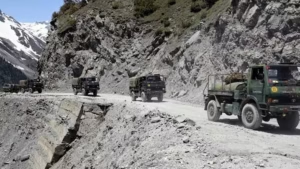
The SSB is in charge of protecting India’s open borders with Nepal and Bhutan, which are marked by extensive cross-border travel and porous borders. In addition to maintaining security, the SSB promotes goodwill among border communities by offering civic engagement initiatives like healthcare and education.
Similar to this, the Assam Rifles, sometimes known as the “Sentinels of the Northeast,” are responsible for both preserving internal security in India’s northeastern states and guarding the Indo-Myanmar border. The region has stabilised thanks in large part to their efforts to combat insurgency, trafficking, and the illegal arms trade.
Technological Advancements in Border Security
India’s border patrol forces have increasingly leaned on technology to enhance their operational effectiveness. The Comprehensive Integrated Border Management System (CIBMS) is a flagship initiative that integrates advanced surveillance, communication, and data analytics to create a robust security architecture. Key components of the CIBMS include:
- Smart Fencing: Along the India-Pakistan and India-Bangladesh borders, smart fences equipped with thermal imaging and intrusion detection systems have been installed to deter unauthorized crossings.
- Unmanned Aerial Vehicles (UAVs): Drones are extensively used for aerial reconnaissance, providing real-time intelligence on suspicious activities.
- Biometric Systems: To curb illegal immigration, biometric identification systems are being deployed at key border checkpoints, ensuring accurate tracking of cross-border movement.
- Satellite Surveillance: High-resolution satellite imagery aids in monitoring remote and inaccessible border areas, enabling preemptive action against potential threats.
These technological interventions have not only strengthened border security but also reduced the dependency on manual patrolling, allowing personnel to focus on strategic operations.
Training and Capacity Building
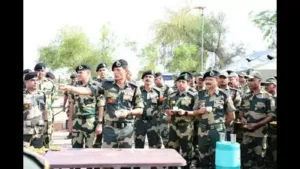
India’s border patrol forces are prepared for a variety of challenges through rigorous training programs. Training modules cover advanced weaponry use, intelligence gathering, combat skills, and physical fitness. Each force is prepared to tackle threats unique to a given region thanks to specialised programs like ITBP troops’ high-altitude survival training and BSF personnel’s counterterrorism training.
Furthermore, international cooperation has been essential in improving India’s border patrol’s capabilities. The sharing of best practices in border management and counterterrorism has been made easier by cooperative exercises with friendly countries like the US, Israel, and France. Access to state-of-the-art training techniques and technologies has also been made possible by these collaborations.
Community Engagement and Border Area Development
India’s border patrol forces have taken a comprehensive approach that involves interacting with local communities, acknowledging that border security is not just a military task. Community cooperation is crucial because border villages are frequently the first to experience cross-border threats. By enhancing infrastructure, healthcare, and education in border areas, programs like the Border Area Development Programme (BADP) hope to promote cooperation and trust.
Notable instances of initiatives to foster goodwill with border communities are the ITBP’s civic engagement initiatives and the BSF’s “Operation Sadbhavana.” These forces have improved the relationship between the security apparatus and the public by arranging cultural events and delivering necessary services, forming a unified front against outside threats.
Challenges and the Way Forward
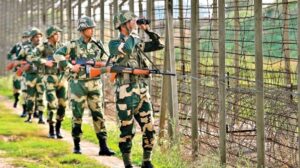
India’s border patrol forces face a number of difficulties in spite of their admirable efforts. The ever-changing nature of cross-border threats, logistical limitations, and harsh weather conditions necessitate ongoing adaptation. Furthermore, a new area of concern is the growing use of drones by adversaries for reconnaissance and smuggling.
The Indian government has made infrastructure development and modernisation a top priority in order to address these issues. This dedication is demonstrated by the substantial budgetary resources that have been allotted to border security in recent years. Plans to improve cybersecurity, acquire cutting-edge weapons, and grow the CIBMS are positive moves.
Conclusion
India’s border patrol forces, which are resilient, committed, and strategically astute, serve as a safeguard against threats to national security. Their ability to embrace technology, adjust to new challenges, and interact with communities highlights how crucial they are to protecting the country. The steadfast dedication of India’s border patrol as it negotiates a challenging geopolitical environment forces ensures that the country’s frontiers remain secure, allowing the nation to thrive in peace and prosperity.





